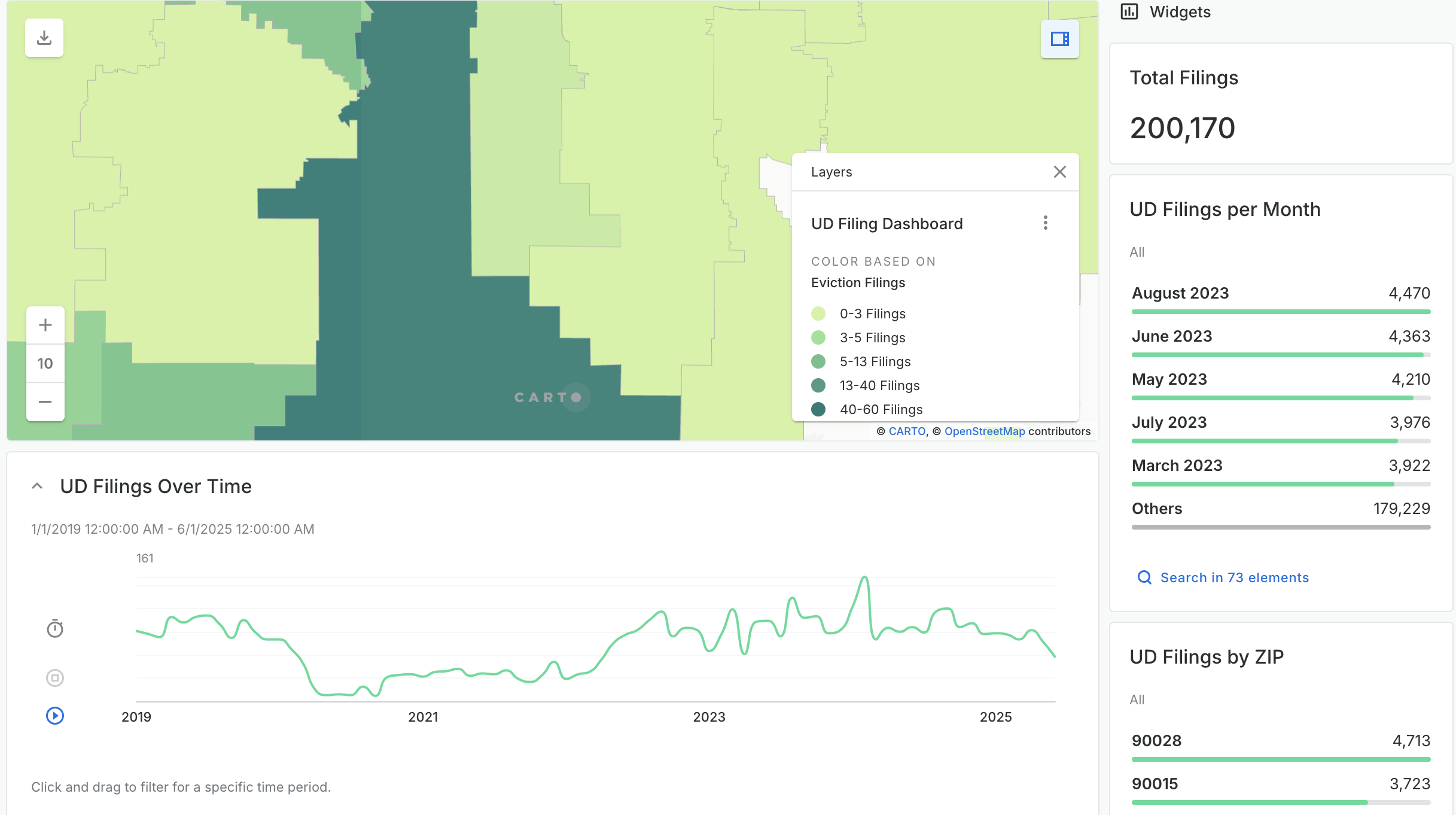The Social Geography of Eviction in LA
LA Evictions by Zip Code (2018-2025)
How to use the map:
Filter for specific months: Under “UD Filings per Month,” search for a year and then select the months you want. For example, type in “2023” and then select “January 2023” and “February 2023”.
Filter for a longer time period: Drag your cursor across the timeline below the map to select a time period.
Filter for a ZIP code: Under “UD Filings by ZIP”, search for your ZIP code. For example, type “90028”. Check the box next to the ZIP code to select multiple.

